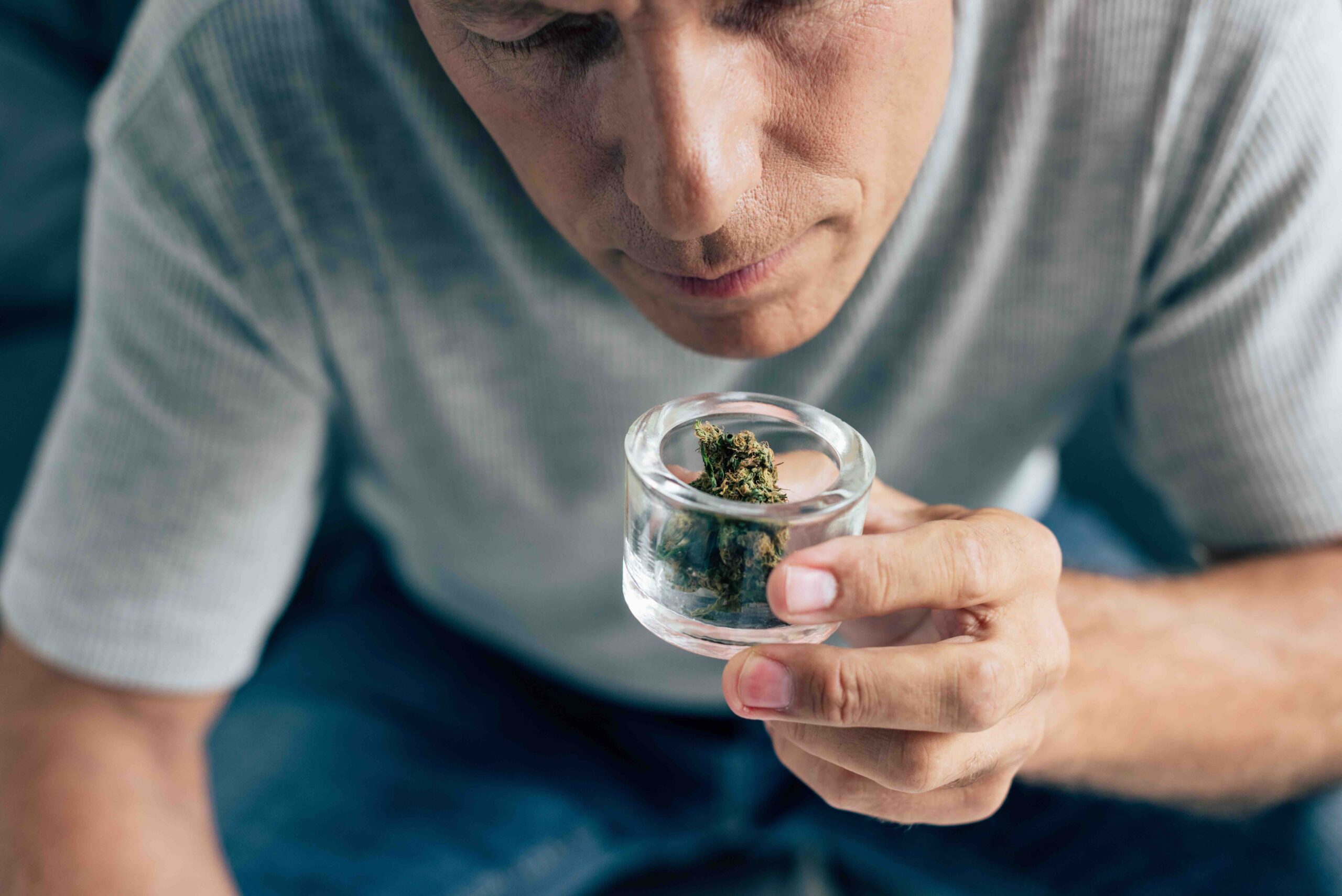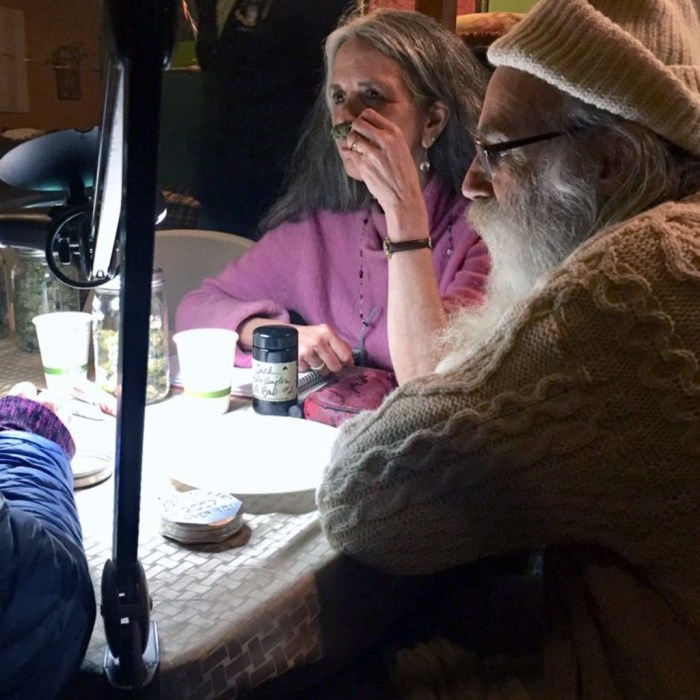
What I learned from Courtside from Weed at the NBA Finals
With great blossoming comes great responsibility. And no one in the world has a larger collection of flowers than the jury for the Emerald Cup, the annual cannabis celebration and competition, where a jury of experts is tasked with identifying the best flowers in California from hundreds of entries.
No matter how much herb you smoke, not everyone is crazy to be an Emerald Cup judge.
Judging all that weed is a grind (pun intended) that’s gorgeous and grueling in equal parts. But rest assured that those entrusted with this tremendous responsibility will do everything in their power to appreciate both the privilege of their position and the importance of the task at hand.
I report this after spending a few months observing their assessment process up close, powered by a series of carefully calibrated protocols that combine an incredible depth of human knowledge and experience with cutting edge laboratory analysis and data.
My access behind the scenes was associated with great responsibility and ultimately with a hard reckoning with my own limits. After initially agreeing to serve as a juror in this year’s competition, I hesitantly bowed in the middle of the process.
Here’s the hard truth: no matter how much herb you smoke, not everyone is nuts to be an Emerald Cup judge. Although I invested a lot of time and energy in the process, I had to admit that I was smoking over my head. To be very clear, I couldn’t run with the big dogs when it came to smoking and evaluating so many incredible samples in the allotted time. Out of respect for the breeders, I gave up my chair.
But I’m glad I had the chance to see the Emerald Cup process first hand. Because judging weed at this annual competition is more serious and demanding than you can imagine.
Related
The 2021 Emerald Cup winners and where to buy them
The history of the creation of the emerald cup
The Emerald Cup began in 2003 as an underground-only competition among outdoor organic growers in California’s famous Emerald Triangle, which is made up of the state’s three largest districts for outdoor cannabis growing – Humboldt, Trinity, and Mendocino.
From those truly local beginnings, the Cup has steadily grown into a world-class show at the Sonoma County Fairgrounds, drawing tens of thousands and musical headliners like Damian Marley and Melissa Etheridge.
After two pandemic years as a virtual event, organizers have just announced that they will return as a live event in December 2021, with the Emerald Cup taking place in Los Angeles for the first time – a profound cultural and geographic shift for an event with deep roots deep in the outlaw grower culture.

And yet some things haven’t changed.
Nikki Lastreto and Swami Chaitanya, the cannabis couple behind Swami Select, have been growing cannabis in Mendocino County since the 1960s. You have been on every Emerald Cup jury from the start. They say that the point of an in-depth evaluation of cannabis is not to be more judgmental, but rather to be appreciative. And while big data and hard science clearly play a role, they will never replace true human intelligence.
“We always had the same four categories for the evaluation,” Lastreto told me. “Appearance, smell, taste and effect.”
Related
The world’s hottest cannabis trends for sale at the Emerald Cup
“The nose knows”
While the appreciation of the many different aromas of the plant has always been a central part of the cannabis connoisseur – see the old adage “the nose knows” – this year, for the first time, the Emerald Cup judges were presented with samples that were pre-grouped according to their dominant terpene .
According to Leafly’s official introduction, terpenes are “the aromatic oils that give cannabis strains their distinctive flavors such as citrus, berries, mint and pine.” Over 100 different terpenes have been identified in cannabis, many of which alone, and particularly as part of an entourage effect, have proven health benefits when combined with cannabinoids such as THC and CBD.

Terpene data profiles included
Every flower sample submitted to the Emerald Cup this year has been analyzed by SC Labs not only for potency and purity, but also to determine its unique terpene profile. Alec Dixon, co-founder of SC Labs and longtime member of the Emerald Cup judging team, says this has made it possible to organize the competition much like the Westminster Dog Show, where different breeds and groups have to compete against each other before moving on “Best in Show”.
“How do you compare a Jack Herer or a Trainwreck to an OG Kush or a Chemdawg,” commented Dixon. “It’s like judging apples and oranges.”
He says the Emerald Cup’s evolution towards terpene grouping began in earnest last year, sorting informally by smell. Due to the success of this experiment, Emerald Cup founder Tim Blake and his competition team decided to involve the laboratory directly this time.
Related
Best cannabis strains of summer 2021
Terpenes revealed, but no brand names
In practice, this meant that while the Emerald Cup remains a blind jury competition – no one knows who submitted what entry until a winner was crowned – the jury’s samples were all pre-marked with stickers identifying their primary terpene .
Not that the jury always needed it, as the judging panel is made up of breeders, pharmacy operators, plant scientists, and others with an encyclopedic understanding of cannabis strains and the uncanny ability to sift through massive numbers of submissions to find the real standouts.
During our regular Zoom meetings, I was often humbled and amazed at their ability to remember exactly what a particular strain looked, smelled, tasted, and felt like.
It was like sitting in the seat and smoking weed at the NBA finals.
Meanwhile, data from previous years confirms that terpenes have always played a paramount role in crowning a champion. According to Dixon, the Emerald Cup winners weren’t significantly above average for THC percentage, “but they always turn out to be one standard deviation higher in total terpene content. That alone shows how great the role of the terpene content is in the assessment, regardless of whether an analytical instrument is part of the process or not. “

Terpene profiles are emerging as a key category
So if the nose knows, why bring in hard science at all?
Firstly, because in recent years the top ten varieties in each flower category have tended to have overrepresented varieties with a similar terpene profile. Dixon attributes this to the excitement about the hot stress of the moment as well as certain “regional terpene biases” among the judges.
The end result was not ideal: attempts by breeders to meet such a specific demand led to an oversupply in the market (see the current craze for desserts) and that pushed less prominent terpene profiles further into the margins.
“It’s a responsibility to pay tribute to the breadth of what the plant expresses,” Dixon told me, “without getting involved in the hype of the moment.”
That’s just the beginning
In future, the competition management plans to sort the submissions not only into the six primary terpene categories, but also into sub-categories that take into account the interaction of primary, secondary and even tertiary terpenes and thus take into account the approximately 12 “archetypes” that historical SC Labs data.
But even then, all of this hard data will always be for human evaluation. That said, when you have some weed friends, you have everything you need to be able to judge for yourself.
“It’s so fun to invite a few friends over and let them each bring a sample to share,” said Nikki Lastreto. “When you smell each bud, crush it a little to release the terpenes and think about what it reminds you of – mangoes? Socks? Pine cleaner? That’s the terpenes. Next, roll a joint and take a “dry drag” before lighting to preserve the flavor. Of course, when you light it, the final judgment is the effect. So take some time to sit back and really feel it. “
Solid advice. And while I’ll never try judging weed again, I’ve definitely learned to appreciate it on a whole new level.
David beehive
Seasoned cannabis journalist David Bienenstock is the author of “How to Smoke Pot (Properly): A Highbrow Guide to Getting High” (2016 – Penguin / Random House) and co-host and co-creator of the podcast “Great Moments in Weed History.” Abdullah and Bean. ”Follow him on Twitter @pot_handbook.
View David Beehive’s articles
By submitting this form, you subscribe to Leafly news and promotional emails and agree to Leafly’s Terms of Use and Privacy Policy. You can unsubscribe from Leafly email messages at any time.

Post a comment: